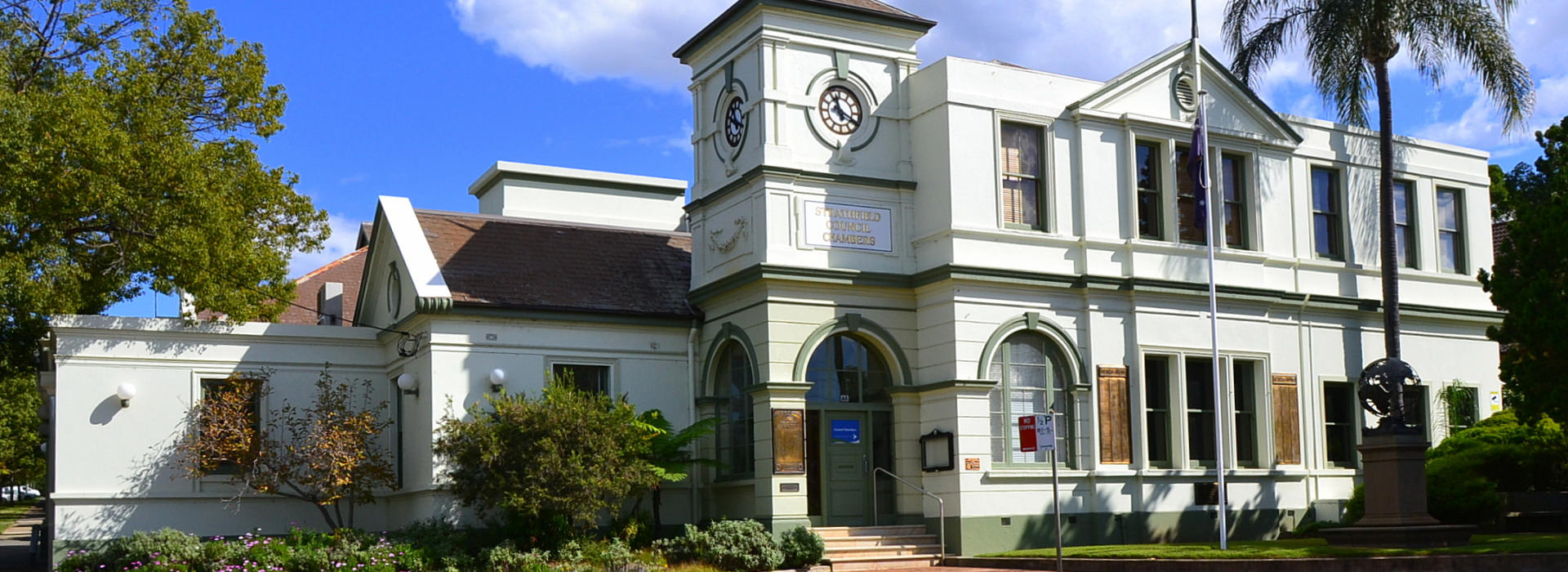Council undertakes a fire safety program to ensure that certain types of buildings are equipped with fire safety equipment, and that they are being maintained.
What are Essential Fire Safety Measures?
These are equipment or building materials designed to prevent or combat fire, and anything listed on the fire safety schedule for a building. Some examples include:
- Sprinkler systems (or automatic fire suppression systems);
- Exit signs;
- Exit systems and paths of travel to exits;
- Fire doors;
- Emergency lighting;
- Fire drenchers;
- Fire extinguishers;
- Fire hose reels;
- Fire hydrants;
- Smoke detection and alarm systems;
- Smoke exhaust systems;
- Solid-core doors.
Other essential fire safety measures are listed within Clause 166 of the Environmental Planning and Assessment Regulation 2000.
What do I need to submit to Council?
The owner or building manage needs to submit a Fire Safety Certificate and a Fire Safety Statement (Annual Fire Safety Statement or Supplementary Fire Safety Statement) to Council at least once every year.
What is a Fire Safety Certificate?
A fire safety certificate is a document listing the essential fire safety measures that is issued by or on behalf of the building owner(s) upon the completion of new building work.
The certificate confirms that each of the fire safety measures that apply to a building (as listed in the fire safety schedule) have been installed and checked by a properly qualified person. This process helps verify that the required fire safety measures are capable of performing to the operating standard required by the fire safety schedule.
A fire safety certificate must be issued using a standard template form published by the NSW Government.
A copy of the form is available for download here.
A copy of the Fire Safety Certificate and Fire Safety Statement is required to be displayed within the building in a conspicuous position and a copy is also required to be forwarded to the New South Wales Fire Brigades.
When is a Fire Safety Certificate Required?
Before occupation of a new building or part of a building, a Fire Safety Certificate is required to be submitted to Council. A Fire Safety Certificate is also required after Council issues a Fire Safety Order.
The owner/s of a building must submit a Fire Safety Statement to Council on an annual basis, confirming that the essential fire safety measures are still in place and functioning. The Annual Fire Statement shall be prepared by a suitably qualified professional.
Council keeps a database and ensures owners maintain essential fire safety measures to protect occupants in those buildings.
Fire Safety Statements
A fire safety statement is a document issued by or on behalf of the owner(s) of an existing building.
The statement confirms that a competent fire safety practitioner has assessed, inspected and verified the performance of each fire safety measure that applies to the building.
There are two types of fire safety statements:
Annual fire safety statements
An annual fire safety statement must be issued each year and include all the essential fire safety measures that apply to a building. The statement also verifies that a competent fire safety practitioner has inspected and confirmed that the exit systems in the building are in compliance with the Regulation.
Supplementary fire safety statements
A supplementary fire safety statement is issued at more regular intervals (as specified in the fire safety schedule) for any critical fire safety measures that apply to a building.
Standard template forms
Fire safety statements must be issued using a standard template form published by the NSW Government.
Following feedback from building owners, councils and industry stakeholders, the Department has updated the fire safety statement form. The new standard template form applies to all fire safety statements issued from 1 February 2020.
Note: Building owners should check the date on which their fire safety statement is likely to be issued before selecting the relevant form and preparing the statement.
Frequently asked questions for building owners and practitioners can be found on the NSW Planning website.
Before occupation of a new building or part of a building, a Fire Safety Certificate is required to be submitted to Council. A Fire Safety Certificate is also required after Council issues a Fire Safety Order.
Who is Responsible for Certification?
The owner of the building. The owner may appoint an authorised person to submit the certificate (such as a Strata manager), and may also choose a suitably qualified person to carry out an assessment of the fire safety measures, such as a fire safety specialist.
NSW Planning has prepared a helpful guide to help select a competent fire safety practitioner.
Failure to comply with fire safety requirements is an offence and Council may issue a penalty infringement notice (on the spot fine) if the essential fire safety services are not fully maintained ($1,500.00) or if the Annual Fire Safety Statement submission requirements are not complied with (up to $2000.00). Council may also serve a Fire Safety Order requiring upgrades or compliance with these fire safety requirements.
The Relevant provisions regarding Fire Safety Certificates and Statements can be found in Part 9 of the Environmental, Planning & Assessment Regulation 2000.
What Buildings are Subject to Fire Safety Requirements?
All buildings which are not domestic single dwellings or outbuildings, being Class 2 to Class 9 buildings under the Building Code of Australia, which are subject to a building approval, construction certificate, complying development certificate or a fire safety notice or order by the Council, after 1 July 1998, are automatically subject to the essential fire safety services requirements.
Class 2 to Class 9 Buildings can include:
- Residential flat buildings
- Certain dual occupancies
- Townhouse developments
- Shops and restaurants
- Office buildings
- Public assembly buildings
- Nursing homes
- Industrial buildings and warehouses
- Places of shared accommodation
- Places of public entertainment.
New buildings
A Fire Safety Schedule will be issued with the Construction Certificate. The Fire Safety Schedule will list the essential fire safety measures that are to be installed in the building or on the land and the Australian and/or other Standards to which they must be installed. A Fire Safety Certificate must be issued prior to the occupation of a building.
Existing Buildings
There are a number of older buildings which may not currently be subject to these requirements; however, many of these buildings will be subject to a development consent, construction certificate or fire safety order at a future date which may incorporate these requirements. Existing buildings should be on Council’s Fire Safety Register, and the existing fire safety measures subject to Annual Fire Safety Statements.
How do I find out what is installed in my building?
Upon approval of a development for Class 2-9 Buildings a Fire Safety Schedule is issued (generally with the Construction Certificate). This Fire Safety Schedule lists all the Essential Fire Safety Measures that are currently existing or are to be installed in the building and the performance standard to which each of those measures must be capable of operating. A Fire Safety Schedule can be issued with a Development Consent, Construction Certificate or Complying Development Certificate, and can be found on Council’s file. A Fire Safety Schedule may also be issued if Council conducts a fire safety audit of the premises. In some cases, existing buildings may already have a Fire Safety Schedule issued with a Building Application prior to 1997.
For older buildings that have not had a Fire Safety Schedule, a fire safety consultant can be engaged to conduct an audit on the building, to report on what is there and to suggest upgraded fire safety measures.
What are My Responsibilities?
It is important that building owners are aware of these fire safety requirements. Failure to comply with these requirements is an offence and will render the owner liable to substantial penalties. But more importantly, a failure to meet these requirements can significantly affect the levels of fire safety afforded to the occupants of the building, which may threaten their life, safety, as well as having significant liability implications for the buildings owner.
Building owners/managers need to be aware of the date on which the Fire Safety Statement must be submitted to Council, to make necessary arrangements for the fire safety measures to be inspected and certified prior to the due date.
To arrange for the essential fire safety services to be inspected and to obtain a Fire Safety Statement, owners/managers are advised to employ the services of a professional building and fire safety consultant.
In the case of residential flat buildings or other strata buildings, the owners’ corporation is advised to make prior arrangements, including the allocation of funds, for a building and fire safety consultant to inspect the premises and to provide the required certification and fee upon the due date annually.
Smoke Alarms
Legislation came into effect 1 May 2006 requiring the installation of smoke alarms in premises which contained sleeping areas; these premises can include residential homes, places providing both short and long term accommodation and the residential portion of mixed use buildings and the individual units of a multi residential flat building.
Location of where smoke detectors should be installed is detailed in the Building Code of Australia, of which a copy is available to the public at Councils Library.
For further information please contact Council’s Development Assessment Team on 9748 9999 or Planning NSW Smoke Alarms Helpline on 1300 858 812.
New standard forms
The Secretary of the Department of Planning and Environment recently approved and published standard fire safety statement and fire safety certificate forms.
These forms are now available in an electronic format so they can be completed online. Building owners required to submit these forms must do so using the standard templates from 1 December 2017.
Please find the links below.


